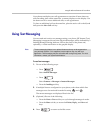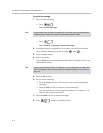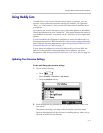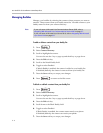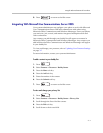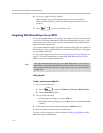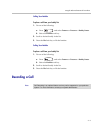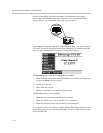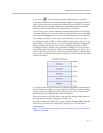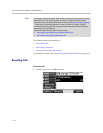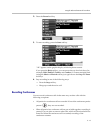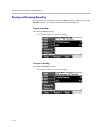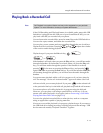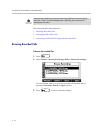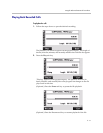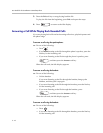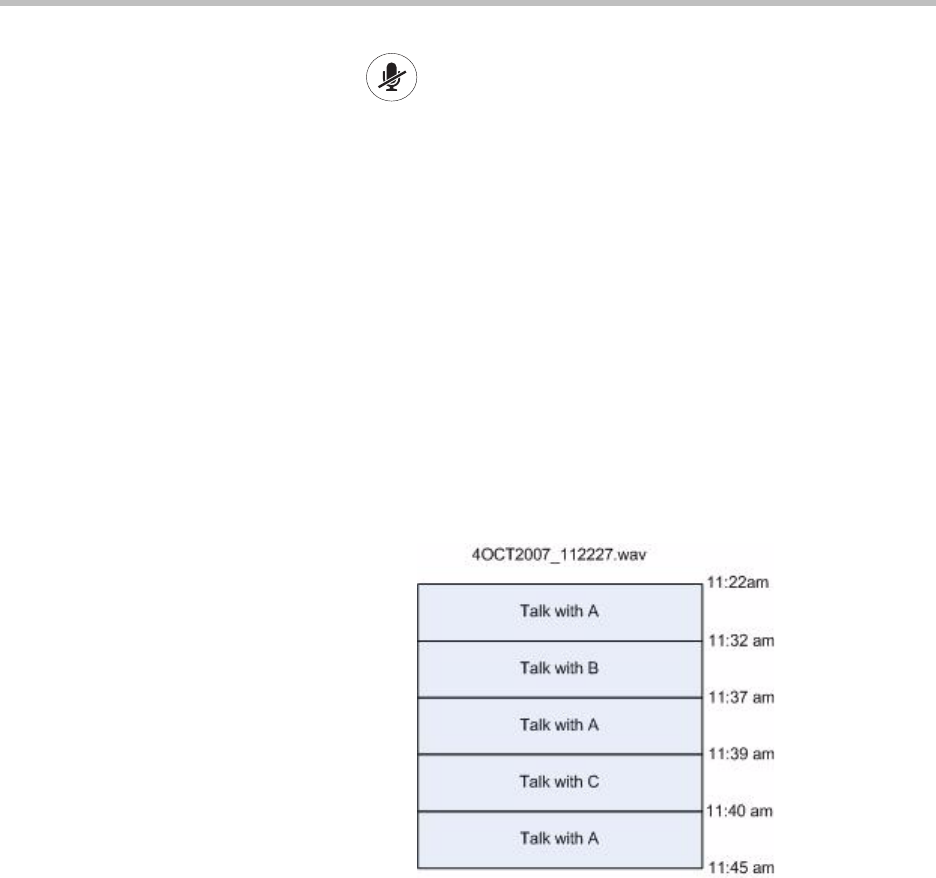
Using the Advanced Features of Your Phone
3 - 11
If you press while recording, only the called parties are recorded.
Tones and indications (for example, dialing of digits or ringing from another
party’s phone) that occur before a call connects are not recorded. Local tones
and indications (for example, DTMF tones when dialing) are not recorded.
However, tones from another party’s phone may be recorded.
You can start, pause, resume, and stop recording through the use of soft keys.
All active calls that occur on your phone between the time you press the Start
soft key and the Stop soft key are recorded, alternating in the same .wav file.
For example, you place a call to party A and, after they answer, you start
recording on October 4, 2007 at 11:22am. While speaking with party A, you get
an incoming call. You put party A on hold and speak with party B. When you
finish speaking with party B, you return to speaking with party A. While
speaking with party A again, you get another incoming call. You put party A
on hold and speak with party C. When you finish speaking with party C, you
return to speaking with party A. You end your call with party A and recording
stops. Your conversations with parties A, B, and C are all recorded in the same
.wav file as follows:
To properly remove the USB flash drive, end recording first, and then remove
the device from the USB port. If you remove the USB device while recording,
the file will be incomplete and will not playback later. There is also a small
probability that the USB flash drive may be damaged.
When you remove a USB flash drive, wait until the “Storage media removed”
message dissapears before plugging in another one.
For a list of supported USB devices, refer to Technical Bulletin 38084 Supported
USB Devices for SoundPoint IP 650 and 670 and Polycom VVX 1500 phones
available from
http://www.polycom.com/support/voice/soundpoint_ip/VoIP_Technical
_Bulletins_pub.html



